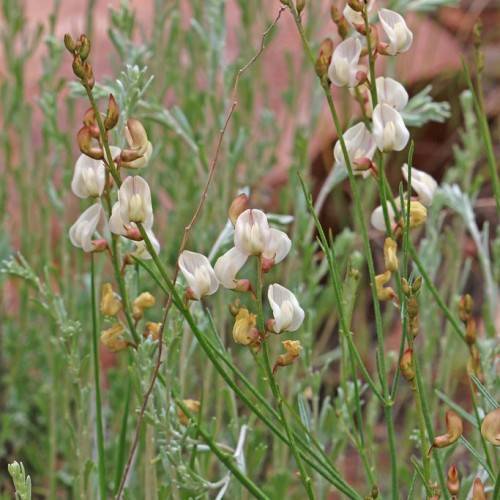
Lesser Rushy Milk-Vetch
Astragalus convallarius
Watering:
Minimal
Hardiness Zone:
Sun:
full sun,part shade
Fruits:
Fruits Ready In Fall
Leaf:
Yes
Growth Rate:
Low
Drought Tolerant:
Yes
Salt Tolerant:
Yes
Care Level:
Medium
watering
Lesser Rushy Milk-Vetch should be watered on a weekly basis in deeper amounts than usual. The soil should be kept moist, but not soggy. Watering should occur late in the day so the foliage has time to dry out before nightfall. When watering, be sure to soak the soil to a depth of 6 to 8 inches. Allow the soil to dry out in between waterings. During periods of extended heat, additional watering may be needed.
sunlight
Lesser Rushy Milk-Vetch plants grow best in full sunlight, which means they receive at least 6 hours of direct sunlight every day throughout the growing season. This species is a spring ephemeral, meaning it will emerge from dormancy in the spring when there is ample sunlight to stimulate flowering and vegetative growth, which typically occurs from April through May in most climates. During the summer, the Lesser Rushy Milk-Vetch will benefit from 6-8 hours of direct sunlight each day. In the fall, this plant may become semi-dormant and require less sunlight with only 3-4 hours per day for productive growth. During the winter months when the plant is in dormancy, it does not need any sunlight to survive.
pruning
Pruning for Lesser Rushy Milk-Vetch (Astragalus convallarius) should occur in late winter or early spring, before growth begins. Pruning should be done to maintain the plant’s natural shape, and to remove dead, diseased, or damaged plant material. Healthy branches of the plant should be pruned to maintain its desired shape; dead or weak branches should be removed entirely. Pruning should be done judiciously, taking care not to reduce the size of the plant drastically. The flower buds and young shoots should never be removed as this will reduce flowering. If the plant is growing too tall, the top-most stem can be cut back, reducing total height. All pruning should be done with sharp shears, and away from the main trunk of the plant. This will ensure that the plant remains healthy.
